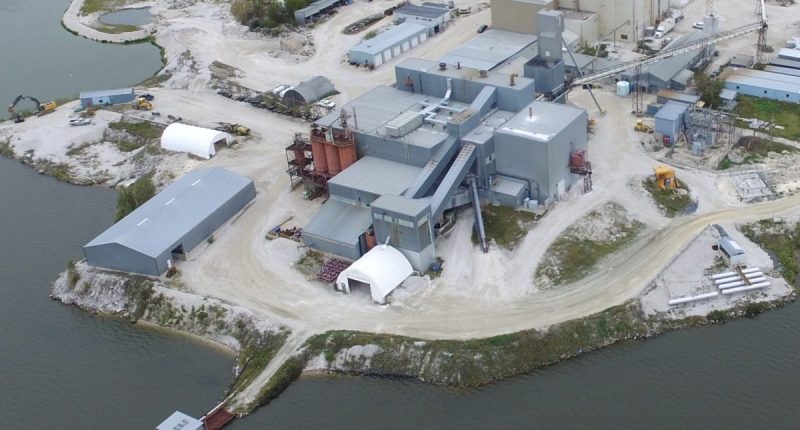Canadian lithium production overview
Canada is emerging as a significant player in the global lithium market, driven by the increasing demand for lithium-ion batteries used in electronics and electric vehicles (EVs).
As of now, Canada produces lithium from two primary mines in Manitoba and Québec, according to Natural Resources Canada data.
This article provides an overview of the current state of lithium production in Canada, highlighting its significance, key players and future prospects.
Current production and key players
Canada’s lithium production has seen a resurgence since 2021. The Tanco Mine in Manitoba has been a notable contributor, exporting lithium for processing. In Québec, the North American Lithium mine near Val-d’Or, which was acquired by Sayona Québec in 2021, resumed limited production in March 2023, with full commercial production targeted for Q3 2023.
Several companies are actively developing lithium projects across Canada, ranging from traditional hard rock mining to unconventional sources such as oilfield brines and industrial wastewaters.
Notable companies include:
Sayona Mining Ltd. (ASX:SYA; OTCQB:SYAXF) is a North American lithium producer with projects in Québec (the Authier Lithium Project (expected to produce around 115,000 tonnes of spodumene concentrate annually) and Tansim Lithium Project, where a recent work program included a 5,000-metre drill program). The company works in partnership in the province with U.S.-based Piedmont Lithium Inc. (NDAQ:PLL; ASX:PLL).
From its headquarters in Vancouver, Lithium Americas Corp. (TSX:LAC; NYSE:LAC) is involved in various other exploration properties across North America while it develops its key projects, Thacker Pass in Nevada, one of the largest known lithium resources in the world.
Frontier Lithium Inc. (TSXV:FL) in the mining hub of Sudbury, is an integrated domestic supplier of spodumene concentrates for industrial users as well as battery-grade lithium hydroxide and other chemicals. The company’s PAK Lithium Project maintains the largest land position and resource in a premium lithium mineral district in Ontario’s Great Lakes region.
The project is expected to produce approximately 1.14 million tonnes of technical-grade concentrate and 115,500 tonnes of chemical-grade concentrate.
Development company E3 Lithium Ltd. (TSXV:ETL) holds a total of 16.2 million tonnes of lithium carbonate equivalent (LCE) measured and indicated, as well as 0.9 million tonnes LCE Inferred mineral resources in Alberta and 2.5 million tonnes LCE Inferred mineral resources in Saskatchewan.
These projects range from early exploration to pre-production stages, indicating a robust pipeline for future lithium production.
Uses of lithium
Lithium is a highly reactive metal primarily used in the manufacturing of rechargeable batteries.
These batteries are essential for:
- Electronics: Laptops, smartphones, and other portable devices
- Electric vehicles: Powering the next generation of transportation
- Grid storage: Supporting renewable energy systems
In 2022, batteries accounted for 80 per cent of the total global demand for lithium, according to Natural Resources Canada. Beyond batteries, lithium is also used in glass products to enhance durability and thermal resistance, making it valuable in various industrial applications.
Key factors driving growth
- Abundant reserves: Canada boasts significant lithium reserves, estimated at 3.2 million tonnes of lithium oxide resources. These reserves are mostly found in the Québec, Ontario and Manitoba, attracting domestic and international mining companies.
- Strategic location: Canada’s proximity to the United States, a major consumer of lithium for EV production, provides a strategic advantage. This geographical closeness can reduce transportation costs and helps ensure a stable supply chain for manufacturers.
- Government support: The Canadian government has identified lithium as a critical mineral essential for the renewable energy transition. Federal and provincial governments offer financial incentives and regulatory frameworks to facilitate lithium exploration and extraction.
Historical and current trends
Historically, Canada had limited lithium production from 2014 to 2020. However, the landscape has changed significantly in recent years. The Tanco Mine’s production and the reactivation of the North American Lithium mine mark a new era for Canadian lithium.
Canada currently has an estimated 3.2 million tonnes of lithium oxides resources (measured and indicated) at hard rock deposits. This gives Canada the potential to become a major supplier in the future, especially as global demand for lithium continues to rise.
Future projections
The global demand for lithium is expected to reach 1.5 million tonnes of lithium carbonate equivalent by 2025 and more than 3 million tonnes by 2030. With ongoing projects and new explorations, Canada is able to increase its share in the global lithium market. The country’s strategic focus on critical minerals and renewable energy transition further supports this growth trajectory.
The future of lithium production in Canada looks promising, with several projects in various stages of development. The increasing global demand for lithium-ion batteries, driven by the transition to cleaner energy sources, puts Canada on track to become a significant player in the lithium market. Continued government support and investment in exploration and extraction technologies will be crucial in maintaining and expanding Canada’s role in this critical industry.
Conclusion
Canada’s lithium production is on an upward trajectory, supported by significant resources and active development projects. As the demand for lithium-ion batteries continues to grow, Canada is poised to become a key player in the global lithium market. Investors should keep an eye on the developments in Canadian lithium mining, as the country’s potential to contribute significantly to the global supply chain is substantial.
Canada’s emergence as a significant player in the global lithium market is driven by its abundant reserves, strategic location, and supportive government policies. With ongoing developments and increasing demand for lithium-ion batteries, Canada is well-positioned to play a crucial role in the future of clean energy.
Join the discussion: Find out what everybody’s saying about public companies and hot topics about stocks at Stockhouse’s stock forums and message boards.
The material provided in this article is for information only and should not be treated as investment advice. For full disclaimer information, please click here.
(Top image of the Tanco Mine: Tantalum Mining Corporation of Canada)

